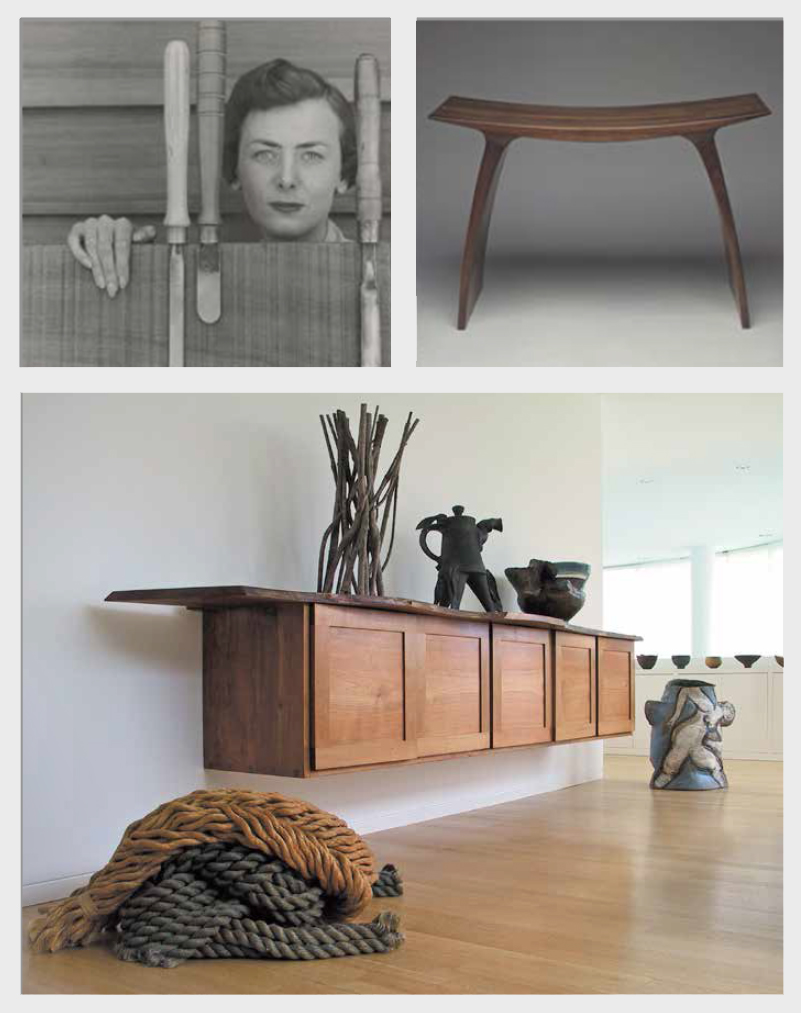
In 2008, a hardcover book gained notoriety for showing a history of 20th century limited-edition furniture and emphasizing American studio design post-World War II to the 1990s.Todd Merrill’s “Modern Americana: Studio Furniture From High Craft to High Glam” was published by Rizzoli International Publications, claiming to offer the first authoritative collection of profiles on great studio furniture makers and designers that defined modern American high style.
But it was an incomplete history, Mr. Merrill noted, void of the role showrooms and female designers had on custom furniture in the United States before the turn of the 21st century.
Last month, Rizzoli Bookstore in Manhattan held a book signing with Mr. Merrill and Eve Kahn, a renowned antiquities writer, to talk about the 10th anniversary expanded edition of “Modern Americana” released in October. The new edition has two new chapters and revises the original chapters to include more about one of the most collectible periods of design. Influential designers featured in the book, including Michael Coffey, Kristina Madsen and Mira Nakashima, were in attendance.
“What could be bad?” laughed Mr. Merrill days later, while he was packing his bags in his Southampton home. The art furniture dealer has a studio on Main Street. He was heading to the airport for a short book tour.
“The last of the great studio artists were in attendance,” he continued.
Todd Merrill: There are 60 new pages. Nearly 100 new photographs. It has been substantially updated chapter by chapter.
The original book was really created based on the secondary market. Artists had been revived, because people started collecting their work in the early 2000s. Their work was bringing very high prices at auction for [George] Nakashima, Paul Evans, Phil Powell, Vladimir Kagan and Wendell Castle.
But to my surprise, there is really no information on these people. That is, aside from people like Nakashima who had books done on their shops. But out of the 27 artists that were profiled in the first book, I think that only three of them had anything that was really done on them. Plus, a lot of them were deceased. I think only six at the time were living. And some of these people like Karl Springer, for example, had the most expensive furniture in America for 20 years. People were spending huge amounts of money on him, but they didn’t even know who the artist was.
The impetus for the book was the market.
The women didn’t start making until 1970. They really started coming about because of academic programs that catered to women that had workshops. Women weren’t even in workshops really before 1970, unless it was family-based like Mira and George Nakashima.
By the ’80s, women were shown actively in galleries and had real business. And at the time I wrote the book, they were not in the secondary market yet. They were still primary market with many of their original galleries.
Flash forward to 2016, we started to look at the book again, and what was missing—the women were missing.
We did a very large, 35-page chapter.
Mira Nakashima, Kristina Madsen, Wendy Mariuma and Rosanne Somerson, who is now the president of Rhode Island School of Design, as well as about 80 other names were profiled or mentioned in the chapter.
It was this whole era in America—in Chicago, New York, Los Angeles, big cities—where people who go shopping at Bloomingdale’s, B. Altman, Lord & Taylor, Directional Furniture, Singer & Sons and Grosfeld House.
These were huge names. People would go on the weekends and change their interiors six times a year. Macy’s turned over literally every month. They were supporting a lot of the artists that were in the book by having sort of contract lines with them. The artist would sell out of their studio work, but then like Vladimir Kagan would do stuff for Directional Furniture and Bloomingdale’s.
There was a difference in the market for furniture you would get in department stores versus what you could get in the studio. Marketwise, if you were a new collector, a Nakashima studio headboard would go for $25,000. But a Nakashima headboard produced—still at very high standards—for Witcomb, which was sold through Bloomingdale’s, would probably be $2,000. People don’t understand the difference.
In the late 1980s, Williams Sonoma came on the scene with cheap, good-taste furniture, and there were a lot of financial mistakes made by some of the executives at the big department stores. Within four years, it was Pottery Barn, Crate & Barrel, Williams Sonoma and Ralph Lauren.
That whole era of specialty showrooms disappeared.
We have another book planned for before 2020.
This would be a different type of book that covered a different area for us. It’s more on the living artists that we, under Todd Merrill Studio, represent now. We want to look at what’s going on in the 21st century.
It will not be a “Modern Americana” book. This would be more contemporary.